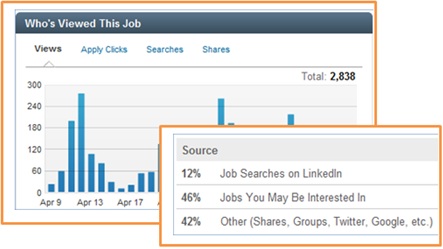Recently, I decided to add to my team and hire a senior business development manager into the mix. As is always the case with most businesses, I wanted a great candidate who could start yesterday. I took a dual approach; firstly I leveraged my own network via referrals and my personal social media presence. Secondly I distributed the vacancy across a number of job boards combining niche sales sites, popular generalist boards, LinkedIn, and the Bullhorn Reach platform.
In this instance, the candidate who eventually got the job ended up coming from my own LinkedIn network. They had simply noticed one of my LinkedIn status updates regarding the new position and got in touch.
After benchmarking the performance of the various platforms used for this recruitment campaign, I thought I’d share some insight from my own experience into the performance of LinkedIn job listings. When I refer to LinkedIn job listings, I’m talking about using the actual job posting functionality which tags the job to your LinkedIn company careers page as opposed to a status update, or posting a careers discussion within a group. Also it’s worth noting, I’ve compiled this data from a reporting element of the LinkedIn recruiter suite which is still in Beta.
With standard job listings, most will agree that you are predominantly targeting active candidates. What I find interesting about LinkedIn job listings however, is how passive candidates appear to be discovering them.
Take my BD job for example. It received 140 apply clicks from 2838 views, however only 12% of the people viewing the job actually originated from active job searching within LinkedIn. 46% of views originated from the job being suggested to users based on their profiles and LinkedIn’s matching algorithm (so not necessarily active candidates). The remaining 42% of views originated from social sharing, Google, Linkedin groups etc (I suspect part of the traffic from this 42% involves aggregator sites delivering active job seekers). Either way there is good reason to believe that a decent number of passive candidates discovered my job.
Example 1 – BD Manager – London
After crunching some numbers on several other roles based not just in the UK, but elsewhere in Europe, a similar pattern emerges with the vast majority of the roles not being found via active searching.
Example 2 – Project Manager (Prince 2 Qualified) – London
This particular project manager position benefited from a higher sharing rate than normal (it was forwarded 15 times and posted within the LinkedIn network an additional 15 times) but again the amount of views originating from active job searching appears to be quite low, only 20%, compared to 35% that had the job suggested to them.
Example 3 – HR Business Partner – London
This HR vacancy generated one of the highest volumes of active job seekers, although again over 6o% of the views originated elsewhere.
Looking at Holland & Belgium it was a similar story, indicating that a large proportion of the candidates viewing the roles were not actively searching for jobs.
Example 4 – Senior Project Manager – Rotterdam, the Netherlands
Example 5 – Online Marketing Specialist, Diegem, Belgium
These are just a small number of examples I’ve pulled out based on several hundred listings. In each case though the pattern is similar with active job searching accounting for somewhere between 20-40% of overall job views.
In summary, based on my usage of the LinkedIn platform, there are more effective and engaging LinkedIn recruitment tactics for hiring that elusive passive candidate, however as an element in a wider strategy I’ve found the use of LinkedIn job listings to be consistently useful, and the data insightful.
By Jean-Paul Smalls of VONQ UK









